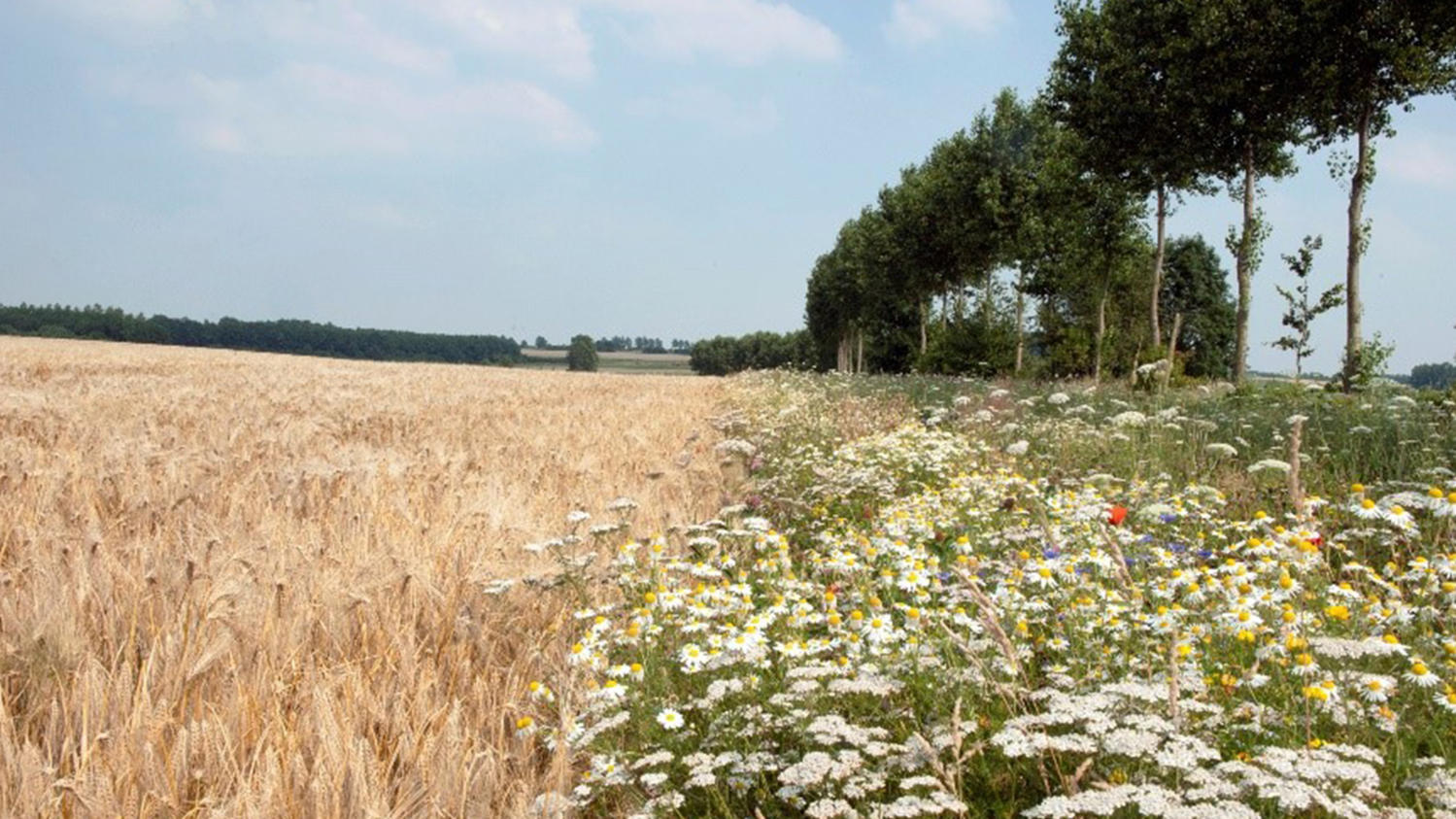Syngenta and Arcadis: Enhancing Biodiversity in Agricultural Landscapes

Biodiversity determines the health and resilience of ecosystems. For the past four years, we have been creating rich habitats on marginal and less productive farmland alongside fields and waterways to create interconnected habitat infrastructures and corridors. We call them multifunctional field margins (MFFMs), because they help to prevent soil erosion and protect waterways while boosting biodiversity.
Our program is impacting a total area of 5.6 million hectares covering projects across Europe, Latin America, North America and Asia. They encompass a variety of local partnerships as well as environmental and cultural approaches.
While we are practitioners and our core task is to raise awareness and establish biodiversity alongside water and soil conservation, we produced a reflection paper with Arcardis to showcase how enhancing biodiversity in agricultural landscapes can generate natural and social capital benefits, for society and business.
- Yes
- Biodiversity & Ecosystem Services
- Climate & Air Emissions
- Materials & Resources
- Water
- Project
- Monetary
- Qualitative
- Quantitative
- Value to society
- GLOBAL
- Health, safety
- Law & order
- Skills & knowledge
- Downstream
- Food and Beverages, Agriculture
Key findings
Through the reflection paper, we seek to establish a dialogue starting with farmers and local stakeholders and moving to a wider group of environmental organizations, academia, aid agencies, governments or other stakeholders to share experiences on how to preserve and enhance agrobiodiversity.
We aim to use the results to inform our internal decision-support system, and to shape our commercial offers and improve value chain collaboration.
We have learned that one important element to evaluate MFFM projects is the attribution of a monetary value. While monetization of ecosystem services is possible, there are some limitations to it. For example, a monetary value cannot account for the trade-offs that the in-field implementation of MFFMs implies.
We believe this paper can support a more in-depth discussion on the advantages and disadvantages of monetizing natural and social capital benefits in the context of MFFMs.
